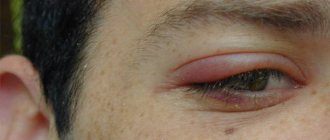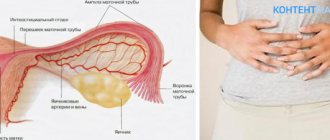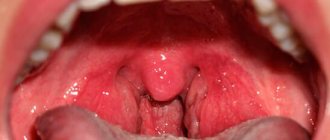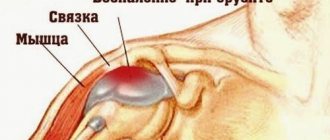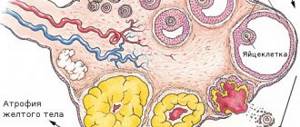Diseases associated with the peripheral nervous system are the most complex in neurology. Trigeminal neuritis occurs quite often in patients. The symptoms and treatment of this inflammation require special attention, as the problem can cause motor dysfunction of the facial muscles.
The trigeminal nerve is an element of the 5th pair of cranial nerves, which is responsible for the sensitivity of the oral cavity and face, the motor activity of the masticatory and temporal muscles. That is, almost all facial movements are the work of the trigeminal nerve. It has 3 branches:
- ophthalmic;
- maxillary;
- mandibular.
The trigeminal nerve is the largest cranial nerve and extends to the jaw.
Structure and functions of the trigeminal nerve
The trigeminal nerve, the largest element of the peripheral nervous system, originates in the nucleus located in the brain. In its different sections, cranial nerves originate, which have their own name and digital designation. Being a pair, the trigeminal nerve also belongs to one of the twelve pairs of cranial nerves, namely the fifth. It branches into its three leading branches:
- orbital nerve;
- maxillary nerve;
- mandibular nerve.
The orbital nerve, passing through the orbit, itself, in turn, is divided into the frontal, lacrimal and nasociliary nerves, which are responsible for the innervation of the upper third of the face, partly the eyes and the nasal cavity. Nerve fibers of the maxillary nerve innervate the temporal zones, lateral areas of the nose, upper lip and upper teeth with gums. The innervation of the lower part of the face, with the chin and lower teeth, goes to the mandibular nerve. In addition to providing sensitivity, the trigeminal nerve is responsible for motor functions, mainly for the movement of the masticatory muscles and facial expressions.
How to treat the trigeminal nerve
It is very difficult to recover from damage to the trigeminal nerve. As a rule, modern therapy methods can only alleviate the patient’s suffering by reducing pain. To treat inflammation, both conservative methods and surgical intervention are used.
First of all, it is necessary to correctly determine the diagnosis. This requires an examination by a neurologist. To clarify the diagnosis and the affected area, the following is prescribed:
- Magnetic resonance imaging;
- Electromyography;
- Electroneurography.
Very often, patients with such pain turn to the dentist, believing that it is a toothache and requires tooth extraction or treatment.
It is necessary to recognize neuritis and begin a course of treatment as early as possible. Any treatment must be prescribed by the attending physician, since many drugs have contraindications and side effects.
As a rule, the complex of therapeutic measures includes drugs with the following effects on the body:
- Antiviral;
- Painkillers;
- Anti-inflammatory;
- Reducing muscle spasms;
- Vitamin complexes;
- Reducing inflammation and swelling;
- Physiotherapeutic procedures.
A massage course will help relieve increased muscle tension. Massage will help improve microcirculation and blood supply in the inflamed nerve, as well as in adjacent tissues. Proper massage in the facial area has a positive effect on the reflex zones at the exit points of the branches of the trigeminal nerve.
Massage for this diagnosis must be carried out in a sitting position, the head should be tilted back on the headrest so that the neck muscles are relaxed.
You can avoid constant use of painkillers by eliminating the source that irritates the nerve, causing pain. In cases where the disease progresses, medications are ineffective and do not relieve attacks of pain, and surgical intervention is resorted to.
The effectiveness of treatment depends on the stage of the disease, the age of the patient, and the presence of concomitant diseases. Clear diagnosis and strict medical supervision are also important.
Treatment with traditional methods is very common. In folk medicine, there are many most effective remedies for inflammation of the trigeminal nerve. However, in most cases, treatment with traditional methods is ineffective. They are only auxiliary means to the main treatment.
Symptoms of trigeminal neuritis
Any pathological process in this nerve affects sensitivity and motor functions. However, it is important to accurately establish the diagnosis - trigeminal neuritis: its symptoms and treatment should not be confused with neuralgia of the nerve, in which only its myelin sheath is affected. Neuritis turns out to be a more serious disease, since the nerve itself is involved in the inflammatory process. The most susceptible to inflammation are the ophthalmic and maxillary nerves.
- The decisive symptom for diagnosis is pain. Depending on which branch of the trigeminal nerve is involved in the painful process, toothache, pain in the brow ridges or temples, in the gums, lips and chin appear. The nature of the pain can be cutting, shooting, sharply piercing and causing torment to a person. The pain can be periodic, increasing gradually and sometimes releasing for short periods of time. It may be painful for the patient to bite his teeth; during an exacerbation of the attack, he breathes heavily or tries to hold his breath and is afraid to make an unnecessary movement.
- Loss of sensation is another sign of trigeminal neuritis. The patient complains of loss of taste, decreased sensitivity of the mucous membrane, and sometimes a complete feeling of numbness in the chin or gums.
- Disturbances in the motor function of the nerve are manifested in difficult chewing movements, fine muscle tremors like tics, convulsions that make it difficult for the patient to swallow food, impaired facial expressions and even facial asymmetry.
What can lead to inflammation
Trigeminal neuralgia can appear on its own, or it can appear as a consequence of a disease. Various factors contribute to the development of the disease; no specific cause has been identified in medicine.
Factors influencing the development of the inflammatory process are the following:
- Hypothermia of the face area;
- Past viral diseases - herpes, herpes zoster and others;
- Weakened immune system;
- Any trauma to the face or head;
- The presence of a tumor or aneurysm of blood vessels that can compress the nerve, impairing its functioning;
- Various diseases or inflammatory processes in the oral cavity;
- Emotional and psychological stress;
- Cholesterol plaques on the walls of blood vessels.
You can find out where the pancreas is located in humans from the publication on our website.
From here you can find out why Cavinton is prescribed.
Read about the polio vaccination schedule in different countries in this article.
Treatment of trigeminal neuritis
Depending on the identified cause, the direction of treatment is chosen, aimed primarily at eliminating the factor that caused the disease: the tumor is removed, excess filling material is eliminated, efforts are directed to destroy the infection, if it was the root cause of the disease, factors associated with intoxication of the body are eliminated and allergies. At the same time, a number of measures are carried out aimed at relieving swelling of the nerve trunk. To combat inflammatory phenomena, the patient is prescribed non-steroidal drugs (ketanov), as well as B vitamins (neuromultivitis). Symptomatic treatment involves taking painkillers and anticonvulsants. Physiotherapy gives good results: novocaine electrophoresis, ultrasound, acupuncture, and later treatment at appropriate resorts with a dry, warm climate.
Treatment
As soon as the doctor has discovered trigeminal neuralgia, treatment must begin immediately, because the longer the disease lasts, the greater the risk of complications. The following drugs are prescribed: anti-inflammatory and painkillers (Celebrex, Diclofenac, Ketanov), antiviral (Acyclovir), B vitamins, drugs to relieve muscle spasms (Sirdalud), glucocorticoids (Methylprednisolone).
It is advisable to combine drug therapy with physiotherapy: magnetic therapy, electrophoresis, UHF. The attending physician prescribes a schedule for the procedures, which must be followed regularly and without omissions.
Massage
A massage will help relieve muscle tension. It should be light in order to most accurately act on damaged areas. Usually they do acupressure. The patient needs to sit down and throw back his head, then lightly rub the neck muscles with his fingers and gradually rise higher. First, healthy areas of the skin are massaged, then the sick ones. What to do if pain attacks begin during a massage? In this case, the massage should be stopped and repeated after a while. If a massage causes pain every time, then only healthy areas should be massaged.
Herbs
Traditional recipes are quite effective in treating trigeminal neuritis if used in conjunction with other treatment methods. To do this, pour one tablespoon of dry crushed chamomile with a glass of very hot water, but not boiling water. You need to leave it for about half an hour, then soak a piece of bandage and apply it to the affected area. Chamomile decoction relieves pain from neuralgia, relieves inflammation, and has antiseptic properties.
Surgical intervention
Sometimes a Janetta operation is performed if the patient does not respond to combination therapy. The surgeon moves aside the blood vessels in contact with the trigeminal nerve canal. Microvascular decompression, during which a plate is placed between the conflicting nerve and the vessel, helps reduce pain. The likelihood of relapse is reduced, but complications may occur: muscle weakness, double vision, facial numbness, hearing loss.
A radical surgical method includes rhizotomy. It can be radio frequency, chemical, thermal. As a result, destruction of the trigeminal nerve roots occurs. The effectiveness of rhizotomy is 95%.
Prevention
Trigeminal neuritis is more difficult to treat with age. In order not to encounter this painful illness, it is enough to follow simple rules:
- this is mandatory monitoring of the condition of teeth and mucous membranes;
- hardening and maintaining immunity at the proper level;
- timely treatment of infectious and colds;
- avoiding stress;
- good nutrition, saturating the body with vitamins;
- prudent behavior: do not overcool, do not expose your wet head to drafts, do not walk in cold damp weather without a hat.
Diagnostics
The symptoms of the pathology are similar to those of other diseases, so the neurologist needs to differentiate from sinusitis, otitis, glaucoma, frontal sinusitis, temporal tendonitis, and occipital neuralgia.
To make a diagnosis, the doctor needs to clarify the nature of the pain in the patient and examine the patient.
Additionally, instrumental diagnostics are prescribed:
- An X-ray of the teeth and jaw allows you to determine the presence of formations pinching the nerve. If the cause of neuralgia is dental disease or poor-quality prosthetics, then therapy is prescribed only after consulting a dentist.
- Magnetic resonance therapy. Allows you to identify vascular pathologies and the presence of a tumor.
- Electromyography. It is used to identify the characteristics of impulse transmission. For atypical trigeminal neuralgia, it reduces the risk of misdiagnosis.
The patient must submit samples of biological material for laboratory testing to exclude the viral nature of the disease.
Possible consequences of trigeminal neurosis
The disease does not disappear on its own; self-medication with the use of potent painkillers without addressing the cause of the discomfort can cause the development of complications such as:
- paresis of facial muscles;
- development of persistent nervous system disorders;
- formation of pronounced facial asymmetry;
- the appearance of persistent pain in the area of inflammation;
- decreased hearing acuity.
In severe forms of the pathology, there is a risk of developing paralysis of the facial muscles.
How to understand that it is the ternary nerve that is inflamed?
The main three branches of the triangular nerve have branches throughout the face. Inflammation of the small branches of the major nerves also causes facial pain. Sometimes these attacks of pain are very difficult to distinguish from the symptoms of other diseases.
The nasociliary nerve arises from the first branch and innervates the frontal sinus , dorsum of the nose and the eyeball. Damage to this nerve due to facial trauma or sinus disease causes acute pain in the frontal and nasal region that lasts several hours. The eyes may also become watery. Constant aching and dull pain is observed between painful attacks.
The superior alveolar nerve arises from the second branch and innervates the gums and upper teeth. This nerve is very often damaged due to jaw injuries or dental procedures. If this particular nerve is inflamed, then pain will not occur due to temperature changes. In other cases, sharp pain will occur in the gums and upper teeth, and between attacks there will be a dull ache.
The mandibular nerve arises from the third branch. Its irritation or damage can be caused by injuries to the jaw or surgery, as well as the removal of lower teeth.
Patients feel toothache, pain in the lower lip, and sometimes in the ears and chin. The pain manifests itself more intensely, so after attacks of pain, patients feel dull pain. Changes in temperature are not provoking factors in these cases.
Poorly made dentures for teeth, facial injuries, inflammation of the maxillary cavities can cause injuries to the buccal nerve, which arises from the third branch, innervating the skin of the corners of the mouth , gums and buccal mucosa. The patient feels moderate pain in the temples and cheek area.
Damage to the lingual nerve causes unpleasant pain. It arises from the third branch and innervates the first two-thirds of the tongue. Damage can occur due to oral trauma, improperly made dentures, or sharp tooth edges. As a result of such damage, acute pain occurs with a simultaneous burning sensation. The patient's tongue also becomes numb and salivates profusely. The pain is more intense when talking, as well as when eating or drinking cold water.
The third branch also divides into the auriculotemporal nerve, which innervates the skin of the temporal region, part of the external ear, the external auditory canal and the parotid gland. Any disease associated with this branch provokes attacks of pain in the temporal region and deep in the ear.
When the glossopharyngeal nerve is affected by pressure from scarring, sclerotic lesions of the arteries, or other processes occurring in nearby tissues, these changes provoke severe pain that travels through the throat and the root of the tongue. Sometimes pain is felt in the ears, eyes and jaw. The attack of pain intensifies while eating and swallowing food, as well as when talking. Painful attacks can last for several days and are simply unbearable for the patient. Between attacks, patients feel a dull pain at the root of the tongue.
Not just the trigeminal nerve
Attacks of facial pain provoke damage to other neural structures. A clear example is tonsillitis, inflammation of the paranasal sinuses and other processes that can cause damage to the autonomic ganglion. The symptoms are reminiscent of facial neuralgia, and causes pain in the eyes, teeth, face, root of the nose, base of the skull and temples. Patients often hear ringing and noise in the ears.
Due to trauma, dental treatment and tonsillitis, the autonomic ganglion, which is localized below the lower jaw, can be provoked. When it is damaged, the patient experiences dull and simultaneous pain. For 10-15 minutes, acute pain may occur in the area below the jaw, which is accompanied by profuse salivation and swelling of the tongue. Pain can be provoked by palpation of the triangle under the lower jaw.
Sometimes, due to a lack of data, trigeminal nerve pain is confused with superior cervical sympathetic ganglion syndrome. Unlike inflammation of the ternary nerve, this syndrome occurs due to pathologies of the lymph nodes, lungs, spine and other surrounding tissues.
In the case of the syndrome, the pain is localized in the entire face. The patient also experiences burning and acute pain in the teeth and mouth. On the affected side of the face, sensitivity increases, with a simultaneous reduction in the pupil and drooping of the corresponding eyelid. The patient develops tachycardia, and changes in blood pressure increase.
Treatment of inflammation of the ternary nerve
The classic symptoms of trigeminal neuralgia include short-term, shooting, superficial, severe pain followed by periods of its absence. But sometimes the symptoms of the disease resemble otolaryngological or dental diseases that arise due to damage to the branches of the main branches of this nerve . Therefore, if the doctor does not find any pathology, the patient should consult a neurologist. For effective treatment, it is very important to know the cause of the pain, so the doctor may prescribe a computer scan, magnetic resonance imaging, or angiography.
In some cases, treatment of the trigeminal nerve does not produce results. Therapy only reduces pain, thereby alleviating the patient's suffering. In all other cases, treatment gives a positive result only if specially selected combinations of medications are used.
Sometimes doctors prescribe surgery, which has a therapeutic effect. Reflexology and therapeutic blockades are also prescribed.
Causes of trigeminal neuralgia
The most common cause is compression of a nerve, or its ganglion (peripheral ganglion), lying inside the cranial cavity by an external object.
Most often, this may be a pathologically tortuous artery - this is arteria cerebellaris superior - the superior cerebellar artery. Where the nerve exits the brainstem, it passes in close proximity to blood vessels. This cause more often occurs with hereditary defects of the vascular wall, if there is an arterial aneurysm in this place, with a pronounced increase in pressure (see Hypertension and trigeminal neuralgia: is there a connection?). Also, trigeminal neuralgia in pregnant women (see Neuralgia during pregnancy) may be associated with this phenomenon. After childbirth, the attacks go away.
Defect in the myelin sheath of the nerve.
This condition occurs in so-called demyelinating diseases: Devic's neuromyelitis optica, multiple sclerosis, acute disseminated encephalomyelitis. In this case, the onset of neuralgia is regarded as a symptom of a more severe disease, and it is called secondary;
This is what nerves look like in real life under a microscope; they are covered with a myelin sheath on top.
Compression of the nerve trunk by a tumor.
The formation can be either benign or malignant, originating from both nerve tissue and the meninges. A classic example is neurofibromatosis, in which fibroids can grow with numerous symptoms, including neuralgia of various locations;
Post-traumatic neuralgia
After a severe concussion, brain contusion, or prolonged unconsciousness, cysts may form, compressing the tissues and leading to pain;
An infrequent but unpleasant cause is postherpetic neuralgia, in which vesicle rashes first appear on the face along the nerves, like chickenpox, and then painful attacks of pain that have a burning tint begin. This indicates the development of neuropathic pain, which is caused by damage to the nervous tissue by the herpes simplex virus.


